Project Vanguard was a program managed by the United States Naval Research Laboratory (NRL), which intended to launch the first artificial satellite into Earth orbit using a Vanguard rocket as the launch vehicle from Cape Canaveral Missile Annex, Florida.

The Aerobee rocket was one of the United States of America's most produced and productive sounding rockets. Developed by the Aerojet Corporation, the Aerobee was designed to combine the altitude and launching capability of the V-2 with the cost effectiveness and mass production of the WAC Corporal. More than 1000 Aerojets were launched between 1947 and 1985, returning vast amounts of astronomical, physical, aeronomical, and biomedical data.

The United States Naval Research Laboratory (NRL) is the corporate research laboratory for the United States Navy and the United States Marine Corps. It conducts basic scientific research, applied research, technological development and prototyping. The laboratory's specialties include plasma physics, space physics, materials science, and tactical electronic warfare. NRL is one of the first US government scientific R&D laboratories, having opened in 1923 at the instigation of Thomas Edison, and is currently under the Office of Naval Research.
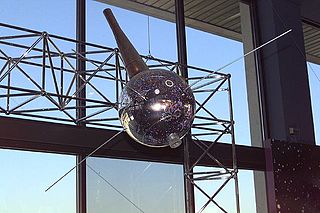
Vanguard 3 is a scientific satellite that was launched into Earth orbit by the Vanguard SLV-7 on 18 September 1959, the third successful Vanguard launch out of eleven attempts. Vanguard rocket: Vanguard Satellite Launch Vehicle-7 (SLV-7) was an unused Vanguard TV-4BU rocket, updated to the final production Satellite Launch Vehicle (SLV).
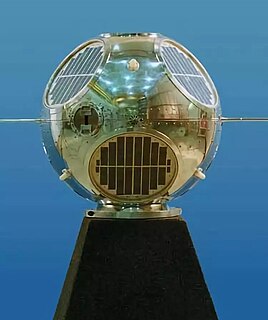
Galactic Radiation and Background (GRAB) was the first successful United States orbital surveillance program, comprising a series of five Naval Research Laboratory electronic surveillance and solar astronomy satellites, launched from 1960 to 1962. Though only two of the five satellites made it into orbit, they returned a wealth of information on Soviet air defense radar capabilities as well as useful astronomical observations of the Sun.

Thor was a US space launch vehicle derived from the PGM-17 Thor intermediate-range ballistic missile. The Thor rocket was the first member of the Delta rocket family of space launch vehicles. The last launch of a direct derivative of the Thor missile occurred in 2018 as the first stage of the final Delta II.
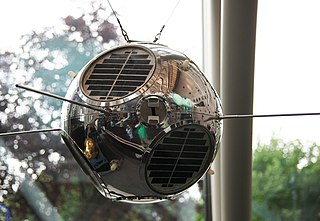
SOLRAD 4B was a solar X-ray, ultraviolet, and electronic surveillance satellite. Developed by the United States Navy's United States Naval Research Laboratory, it was the fifth in both the SOLRAD and the GRAB programs.

OSCAR 3 is the third amateur radio satellite launched by Project OSCAR into Low Earth Orbit. OSCAR 3 was launched March 9, 1965 by a Thor-DM21 Agena D launcher from Vandenberg Air Force Base, Lompoc, California. The satellite, massing 15 kg (33 lb), was launched piggyback with seven United States Air Force satellites. Though the satellite's active life was limited to sixteen days due to battery failure, OSCAR 3 relayed 176 messages from 98 stations in North America and Europe during its 274 orbit life-time -- the first amateur satellite to relay signals from Earth. As of 2021, it is still in orbit.

Vanguard TV-5, also called Vanguard Test Vehicle-Five, was a failed flight of the American Vanguard rocket following the successful launch of Vanguard 1 on Vanguard TV-4. Vanguard TV-5 launched on 29 April 1958 at 02:53:00 GMT, from Launch Complex 18A at the Cape Canaveral Air Force Station. The rocket was unsuccessful in its attempt to place an unnamed satellite into orbit.

Solrad 9, also known Explorer 37 and Explorer SE-B, was one of the SOLRAD program that began in 1960 to provide continuous coverage of solar radiation with a set of standard photometers.

Solrad 10, also known Explorer 44, NRL-PL 165 and Explorer SE-C, was one of the SOLRAD series designed to provide continuous coverage of wavelength and intensity changes in solar radiation in the UV, soft and hard X-ray regions. The satellite also mapped the celestial sphere using a high-sensitivity X-ray detector.
Explorer 44,, was a NASA satellite was one of the SOLRAD program that began in 1960 to provide continuous coverage of solar radiation with a set of standard photometers. Explorer 44 was a spin-stabilized satellite, was the third in a series of SOLar RADiation spacecraft (SOLRAD) designed to provide continuous coverage of wavelength and intensity changes in solar radiation in the UV, soft, and hard X-ray regions. It also mapped the celestial sphere using a high-sensitivity X-ray detector. Information collected was expected to contribute to a better understanding of the physical processes involved in solar flares and other solar activity, and the potential effects of this activity on short-wave communications, as well as on future human space travel. For the period of July 1971 to June 1973, the core memory data of Explorer 44 were used rather than those from Explorer 37. The Explorer 44 core memory failed on 11 June 1973, and Explorer 37 was heavily used until 25 February 1974, when the gas supply of the attitude control system was exhausted.
SOLRAD 7A was the seventh solar X-Ray monitoring satellite in the SOLRAD series, and the fourth to successfully orbit the Earth. It was boosted into orbit along with four other military satellites atop a Thor Augmented Delta-Agena D rocket on January 11, 1964. Data returned by SOLRAD 7A dramatically revised scientific models of the solar corona.

SOLRAD1 is the public designation for SOLRAD/GRAB 1, a combination science and surveillance satellite launched into orbit on 22 June 1960. It was the first satellite to successfully observe solar X-rays, the first to conduct surveillance from orbit, and the first to be launched with another instrumented satellite.

SOLRAD 2 was the public designation for a combination surveillance and solar X-rays and ultraviolet scientific satellite, the second in the SOLRAD program developed by the United States Navy's Naval Research Laboratory. The SOLRAD scientific package aboard the satellite provided cover for the GRAB electronic surveillance package, the mission of which was to map the Soviet Union's air defense radar network.
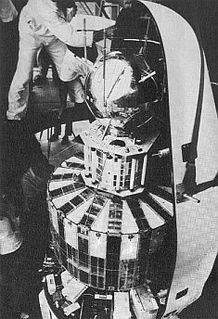
SOLRAD 3 was a solar X-ray satellite, the third in the SOLRAD program. Developed by the United States Navy's Naval Research Laboratory (USNRL), it shared satellite space with and provided cover for the Navy's GRAB 2, a secret electronic surveillance program.
SOLRAD 6 was the sixth solar X-ray monitoring satellite in the United States Navy's SOLRAD series, the third in the series to successfully orbit. It was launched along with POPPY 2, an ELINT surveillance package, as well as three other satellites, boosted into orbit via a Thor Augmented Delta-Agena D rocket on June 15, 1963.

SOLRAD 4 was a solar X-rays, ultraviolet, and electronic surveillance satellite. Developed by the United States Navy's United States Naval Research Laboratory (USNRL), it was the fourth in both the SOLRAD and the GRAB programs.

EMISAT, launched on 1 April 2019, is an Indian reconnaissance satellite under Defence Research and Development Organisation (DRDO) project Kautilya which is a package that provides space-based electronic signal intelligence or ELINT. The spacecraft helps in improving the situational awareness of the Indian Armed Forces as it will provide information and location of enemy radars. The ELINT payload is developed by Defence Electronics Research Laboratory (DLRL), while augmented Indian Mini Satellite-2 (IMS-2) platform is provided by Indian Space Research Organisation (ISRO). The capabilities of the Kautilya package is highly classified. It monitors radio signals to determine the location and source of all transmission.
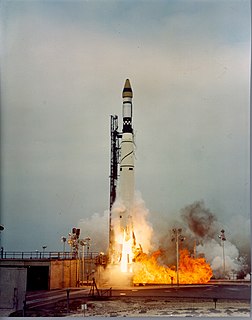
SOLRAD 7B was the eighth solar X-Ray monitoring satellite in the SOLRAD series and the fifth to successfully orbit the Earth. It was launched via Thor Augmented Delta-Agena D along with seven other satellites on March 9, 1965. The satellite provided continuous coverage of the Sun during the International Quiet Solar Year from March through October 1965.















